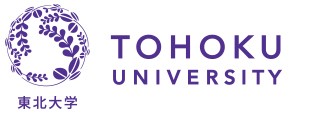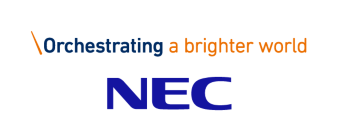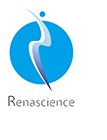
AI may be able to help doctors select the optimal insulin (above) dose for patients with diabetes mellitus.Credit: SCIEPRO/Science Photo Library/Getty
Using artificial intelligence (AI) to improve medicine will bring untold progress, it has already been used extensively in patient diagnosis. Now, researchers at Tohoku University in Sendai, Japan, are using AI to improve treatments including insulin therapy and hemodialysis.
Recognizing the need to involve AI experts and health tech companies from the beginning of the R&D process, the Tohoku University Graduate School of Medicine, has established the ‘Medicinal Hub’ linking doctors, AI researchers, and health tech companies to develop AI-based medical solutions for use in the real world.
The driving force behind the Medicinal Hub is Toshio Miyata, a professor in medical science and translational research at Tohoku University Graduate School of Medicine. He says the hub provides a framework where doctors, AI researchers and health tech companies can work together to further develop medical AI.
“Collaboration among doctors and AI researchers is important,” he says. “Active involvement of medical doctors, who have experience, medical knowledge and data, is the key for success,” he says.
Almost half of the researchers working in the hub come from IT companies, such as NEC Corporation. Ryosuke Togawa, an AI researcher with NEC, has been working with Miyata for three years and says that working with medical experts is invaluable for developing medical AI solutions.

The Medicinal Hub at Tohoku UniversityCredit: Tohoku University
“To develop an AI that stands up in medical practice, it is essential that we have input from medical experts, not only to increase its accuracy, but improve its functions for use in different scenarios,” he says.
AI for insulin therapy
“AI that has learned the experience of medical specialists can provide valuable information to non-specialists,” says Miyata. In an ideal setting, diabetologists are available to provide intensive insulin therapy to strictly control blood glucose levels and prevent diabetic complications. They have the experience and knowledge to set optimal insulin dosages for different patients.
But in reality, non-diabetologists are often the ones providing the insulin, which can be difficult, as the safe insulin dose range is narrow and excessive doses can cause complications such as hypoglycemia.
“There are not enough diabetologists, especially in rural areas,” says Miyata, who is working on a project using AI to support non-diabetologists to perform intensive insulin therapy and to select optimal insulin doses for hospitalized patients.
The AI is based on an algorithm known as Behavioral Imitation Learning Technology, which was originally developed by a researcher in NEC Laboratories America to learn repeated skills of professionals and predict behaviour patterns. Miyata’s and Togawa’s team customized it for medical use and worked with diabetologists to apply it to solve the issues.
After analysing big data from patients admitted to Tohoku University Hospital over five years, the team has developed a cloud-based AI (DM-SAiL) that provides recommended insulin dosage with a very small error margin.
While the technology is being developed for hospital patients, Miyata hopes it will be developed to support insulin therapy at home in the future.
The project has been selected by the Japan Agency for Medical Research and Development (AMED) and the clinical performance test will be conducted in 2024 with the aim of filing for regulatory approval.
AI for hemodialysis
Another AI project to predict optimal water removal for hemodialysis patients, conducted by Tohoku University, was also selected by AMED.
Led by Miyata and Masaomi Nangaku, a professor at the University of Tokyo Graduate School of Medicine, the project is developing AI which will optimize maintenance hemodialysis and support non-specialist doctors to implement hemodialysis therapy.
In maintenance hemodialysis treatment for people with end-stage kidney failure, blood is drawn from the body and, after correcting electrolytes and removing waste products and excess water, the cleaned blood is returned for circulation.
Appropriate water removal is the most important and difficult part of the procedure — insufficient water removal can impair cardiopulmonary function and excessive water removal can lead to other adverse effects. People on hemodialysis undergo the procedure once every few days.
Using data from 3,000 hemodialysis patients in Japan (approximately 800,000 dialysis sessions), Miyata and Nangaku worked with NEC to train an AI engine to optimize the total amount of water removed and predict the probability of a fall in blood pressure during dialysis. They added personalized data for each patient, such as hemodialysis information, blood test results and patient attributes, to train the model, making it more effective and accurate.
According to Nangaku, the AI can predict the target amount of water removal and the probability of a decrease in blood pressure during dialysis with a high degree of accuracy.

AI could help non-specialist doctors implement hemodialysis treatment.Credit: saengsuriya13/iStock/Getty
In the future, he hopes the AI can be used for clinical practice as ‘software as a medical device’ (SaMD) to predict blood pressure lowering and optimal total amount of water removal volume, as well as operating in the cloud and on PCs in medical institutions. Another future development could be an AI equipped hemodialysis machine that controls the amount of water removal and blood flow in real time.
“Development of the AI technology could eventually facilitate home therapy which would reduce pressure on outpatient clinics and improve access in remote areas,” he says.
Looking ahead
While both the insulin therapy and hemodialysis projects are heading for clinical trials in 2024, Miyata says several projects in different fields of medicine are in progress and future initiatives will be selected based on criteria such as abundance of high-quality medical data, involvement of doctors, and potential to commercialize the technology.
“Rather than looking for a medical field where we can utilize a specific AI algorithm, we need to select or develop the optimal algorithm to solve a specific medical issue,” he says. “We use the Biodesign principle, where solutions are developed, starting from the needs of the medical field and optimized by envisioning the final product.”
Togawa says the emergence of generative AI will have a huge impact on sectors across society, including medical research.
“In the future, generative AI could be used to consolidate existing AI applications. For example, to link diagnostic imaging and electronic medical records to enable consistent analysis that supports human decision making,” he says. “But, high-quality data remains essential for developing AI technology. Collaboration with skilled doctors, who can supervise the data, is very important for the research and development of medical AI.”





 Nature Index Health Sciences 2024
Nature Index Health Sciences 2024